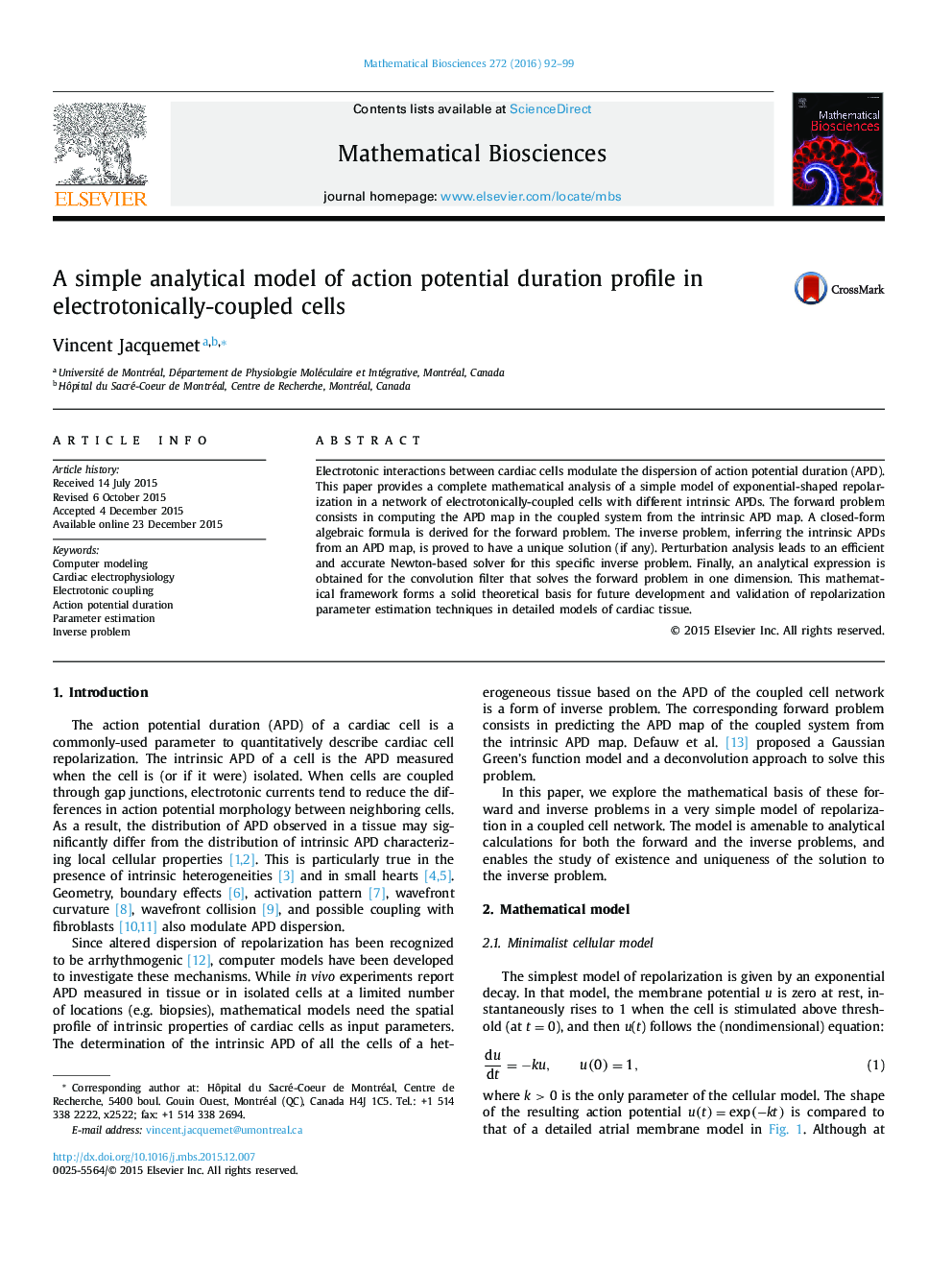| Article ID | Journal | Published Year | Pages | File Type |
|---|---|---|---|---|
| 4499913 | Mathematical Biosciences | 2016 | 8 Pages |
•A simplified model is proposed to study action potential duration (APD) dispersion•A closed-form formula is derived to compute the APD profile from intrinsic APDs•An algorithm is proposed to infer intrinsic APDs from the APD profile•The APD profile is written as a convolution filter applied to the intrinsic APDs•This framework may be used to estimate repolarization parameters in a tissue
Electrotonic interactions between cardiac cells modulate the dispersion of action potential duration (APD). This paper provides a complete mathematical analysis of a simple model of exponential-shaped repolarization in a network of electrotonically-coupled cells with different intrinsic APDs. The forward problem consists in computing the APD map in the coupled system from the intrinsic APD map. A closed-form algebraic formula is derived for the forward problem. The inverse problem, inferring the intrinsic APDs from an APD map, is proved to have a unique solution (if any). Perturbation analysis leads to an efficient and accurate Newton-based solver for this specific inverse problem. Finally, an analytical expression is obtained for the convolution filter that solves the forward problem in one dimension. This mathematical framework forms a solid theoretical basis for future development and validation of repolarization parameter estimation techniques in detailed models of cardiac tissue.
